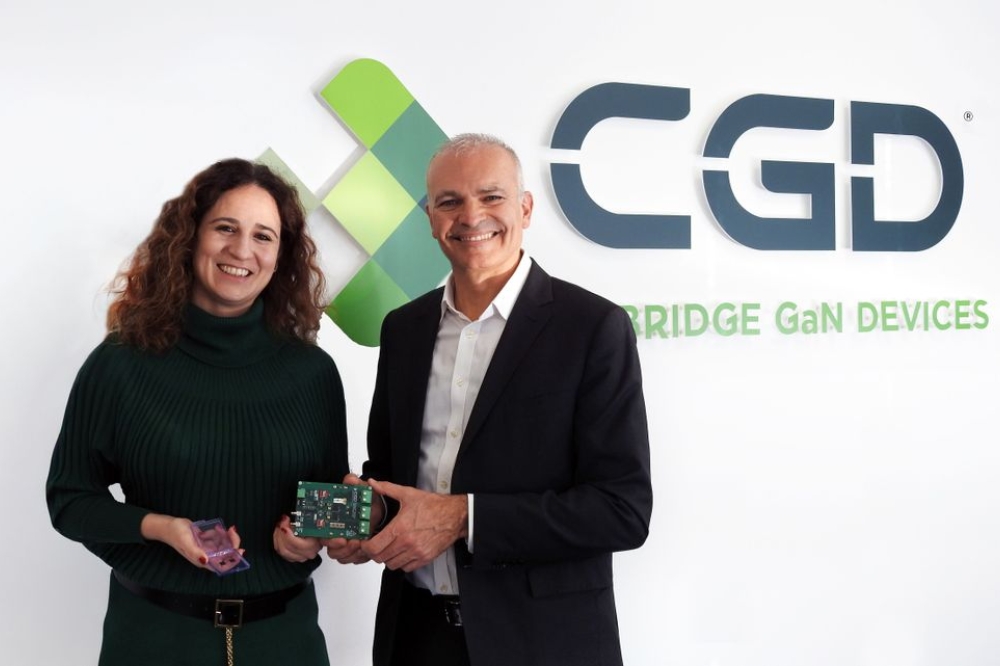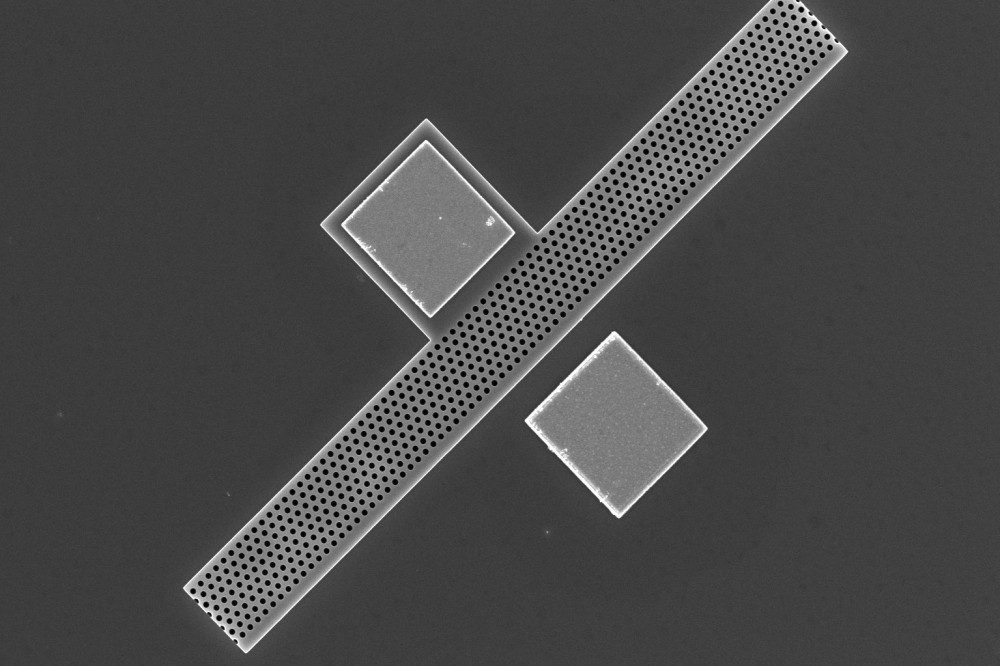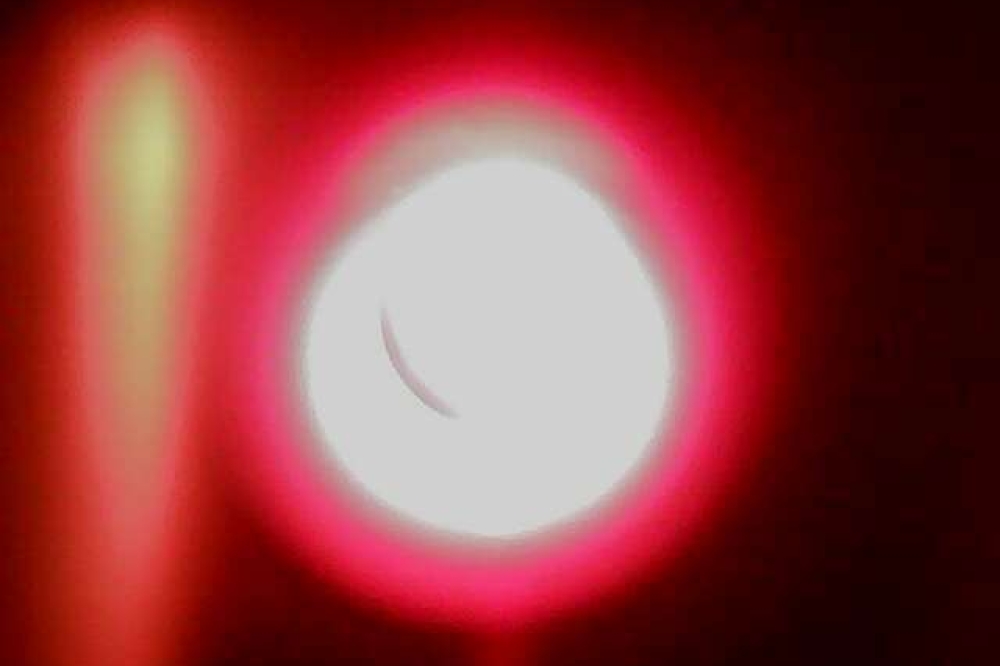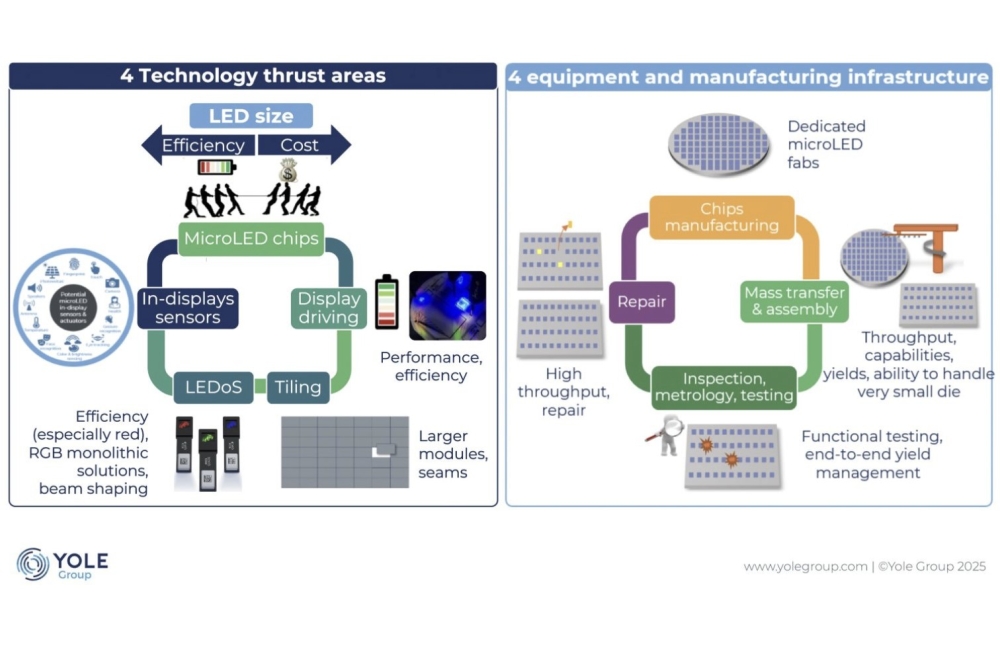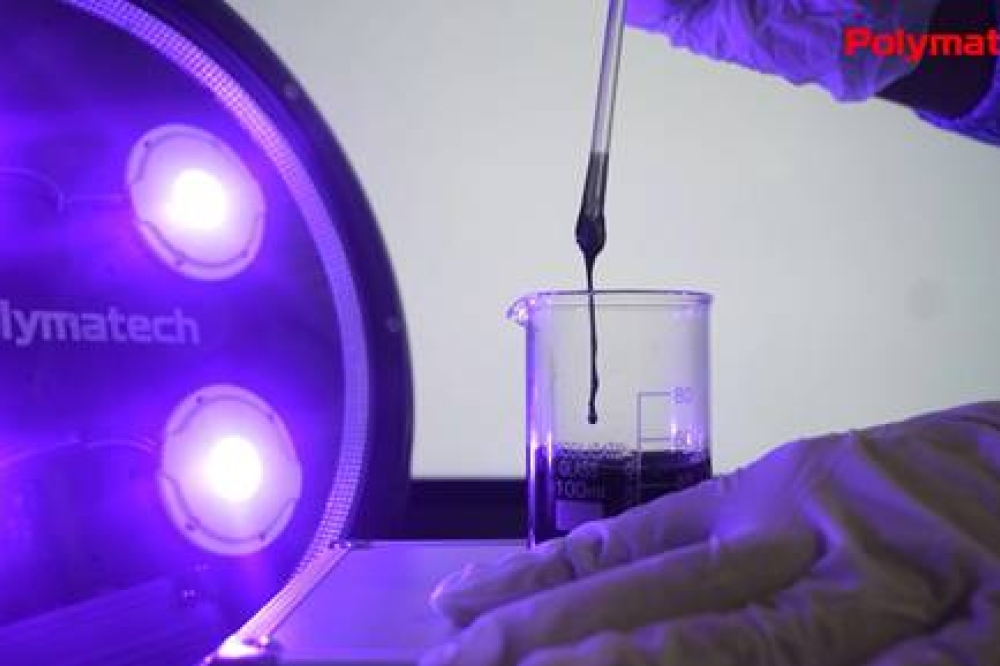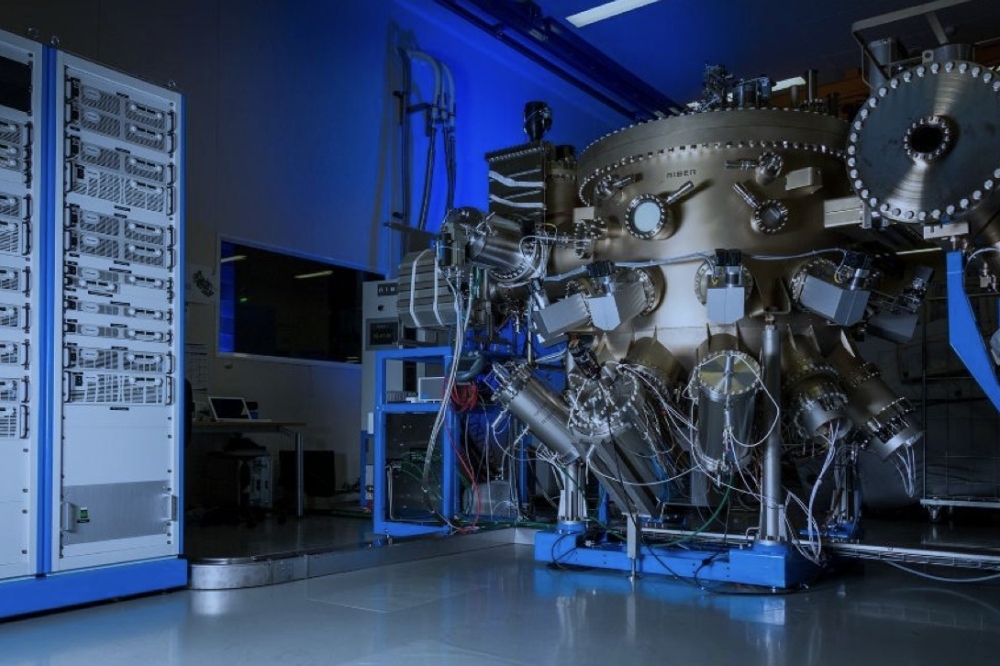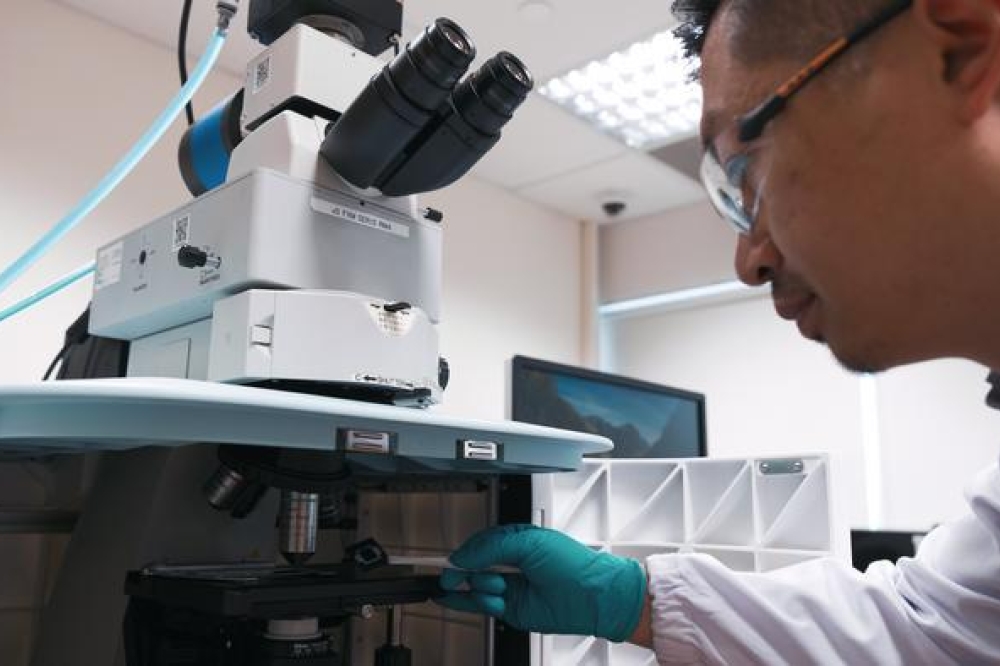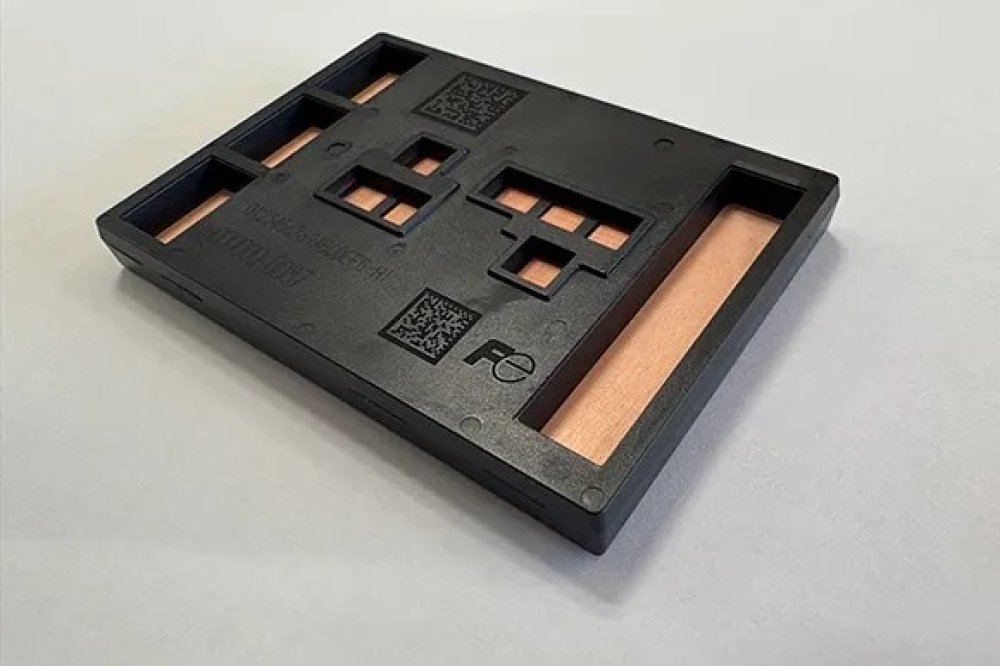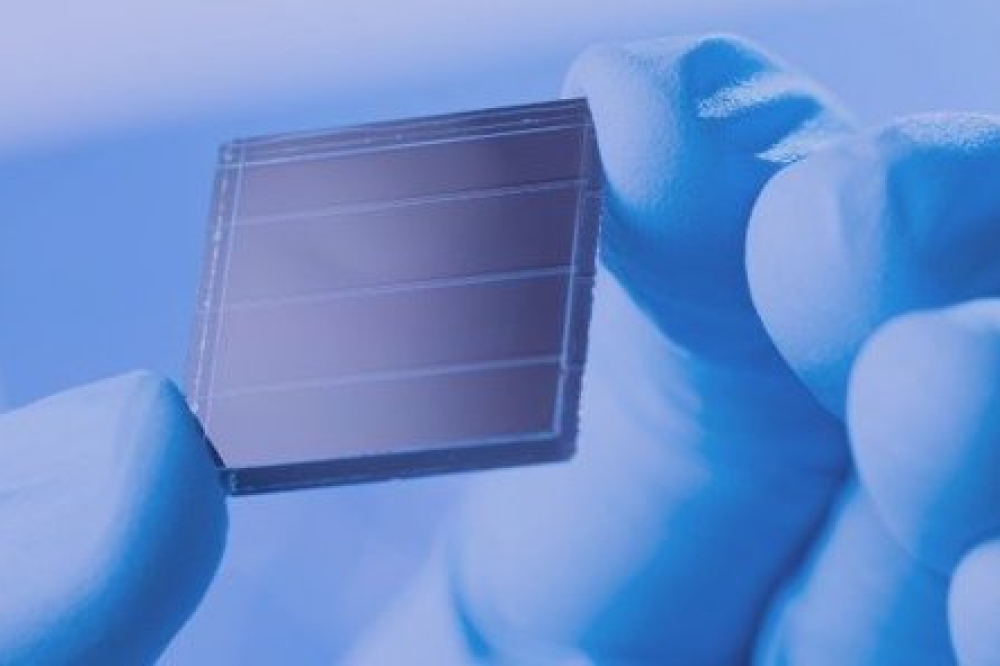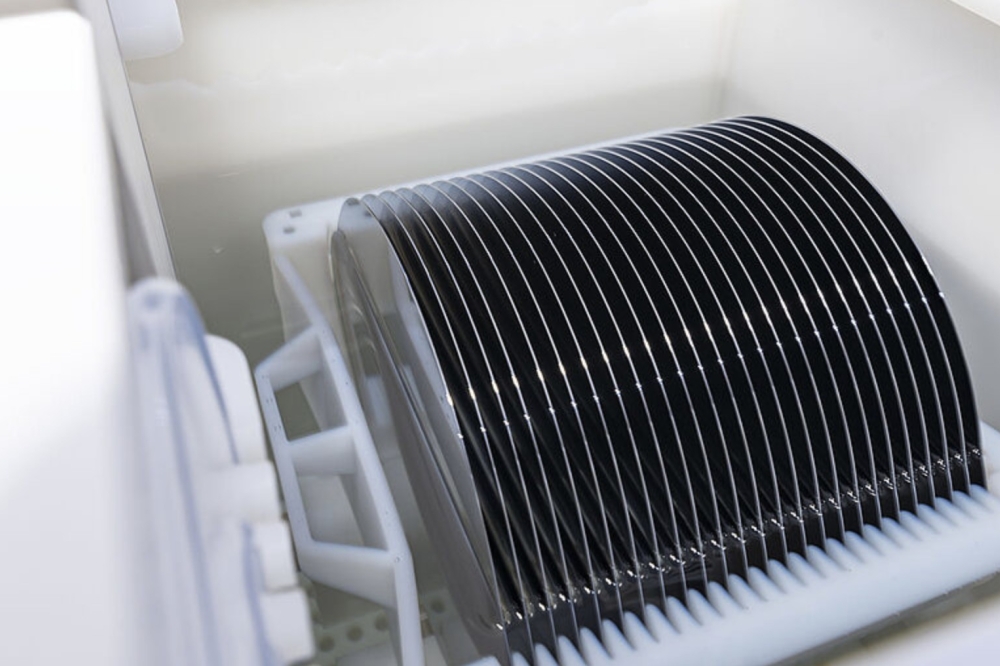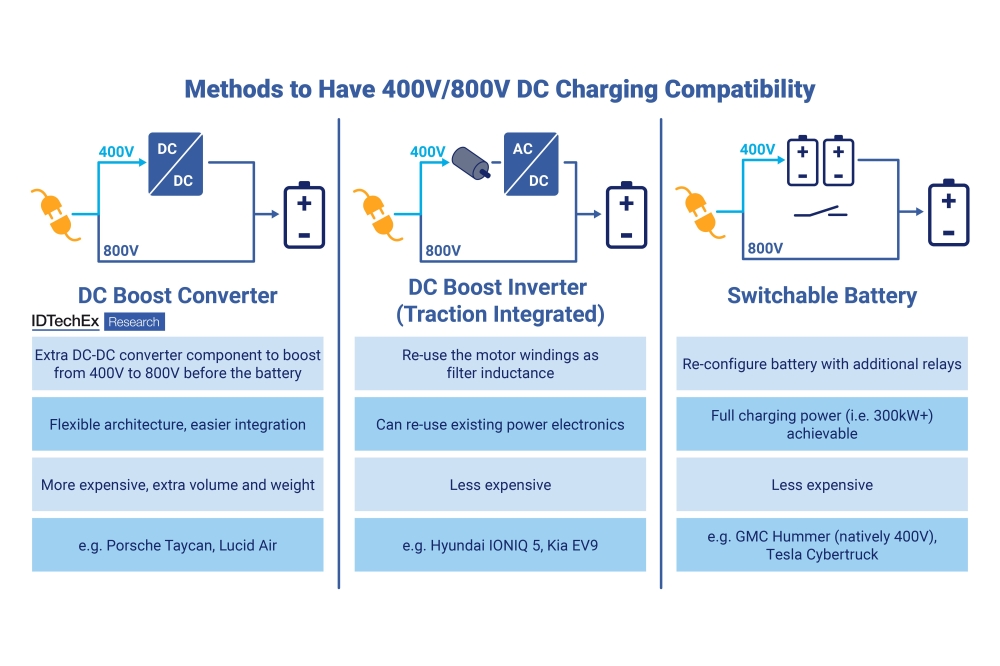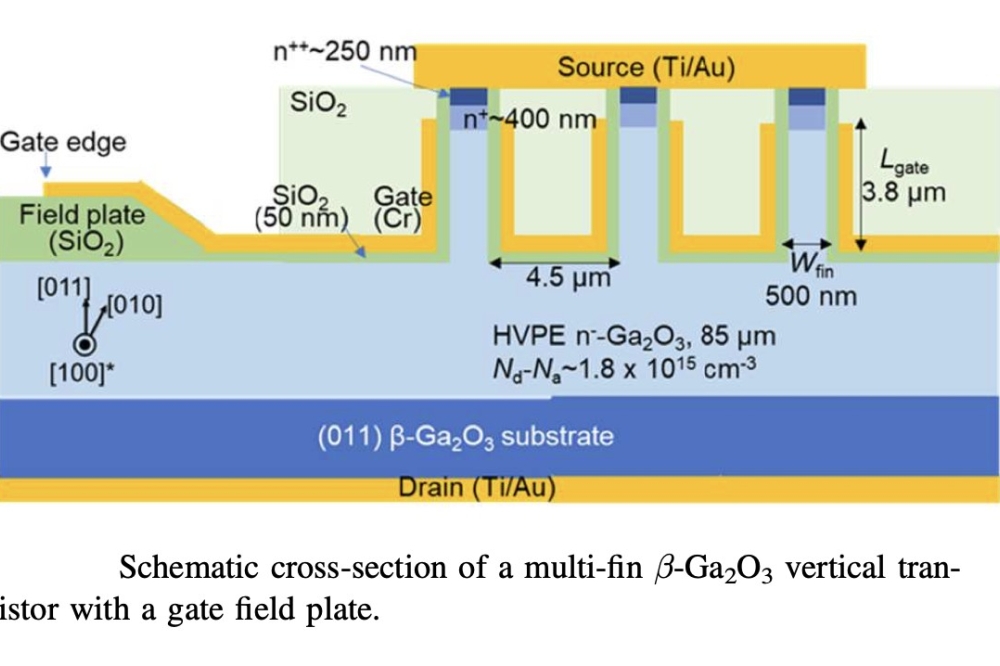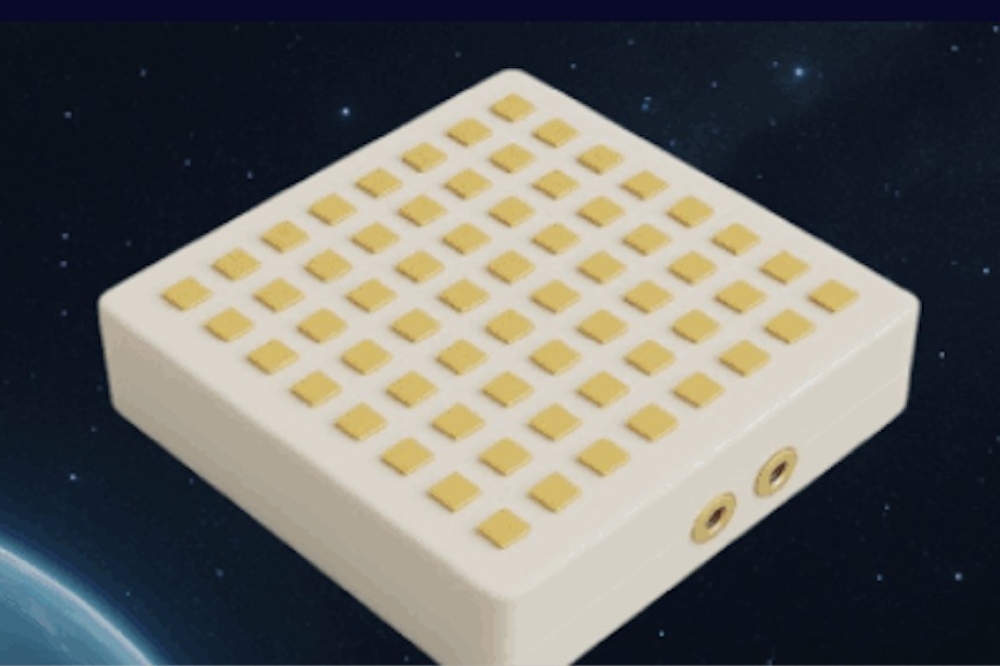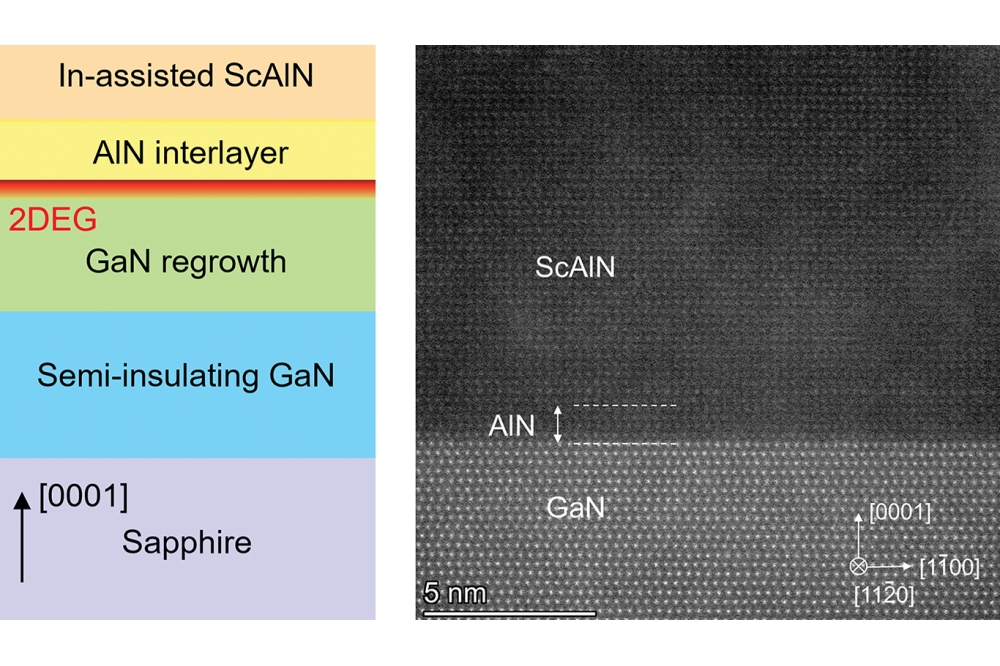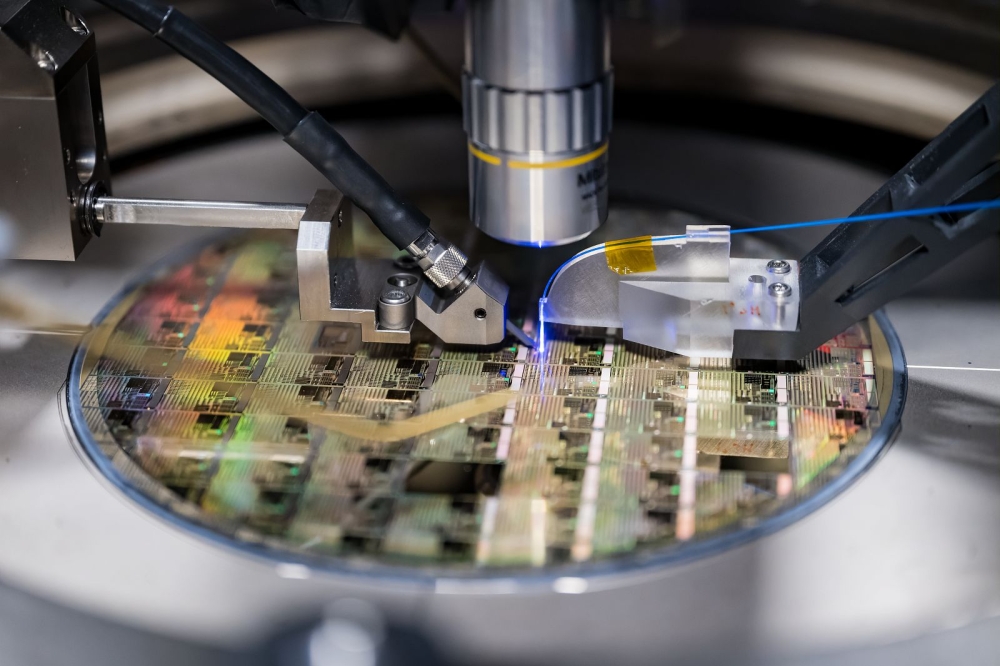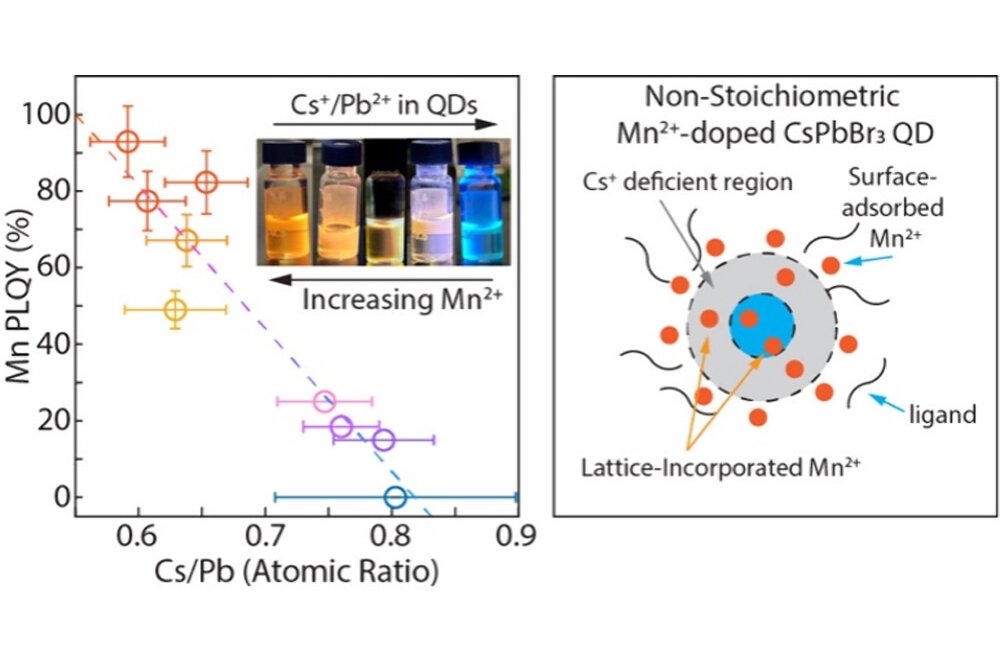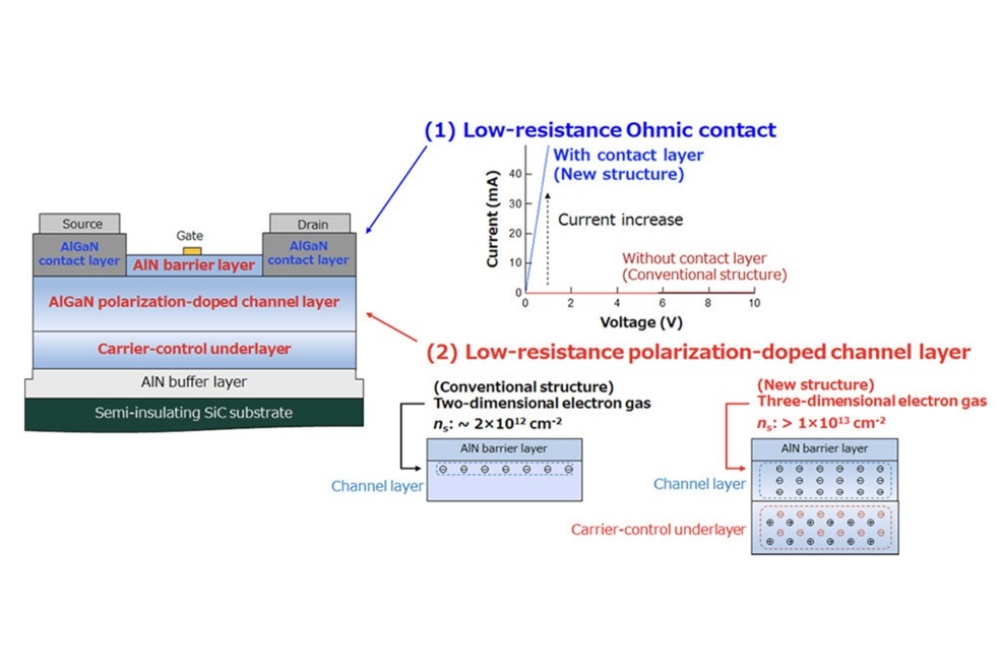Researchers discover LED 'Efficiency Cliff'
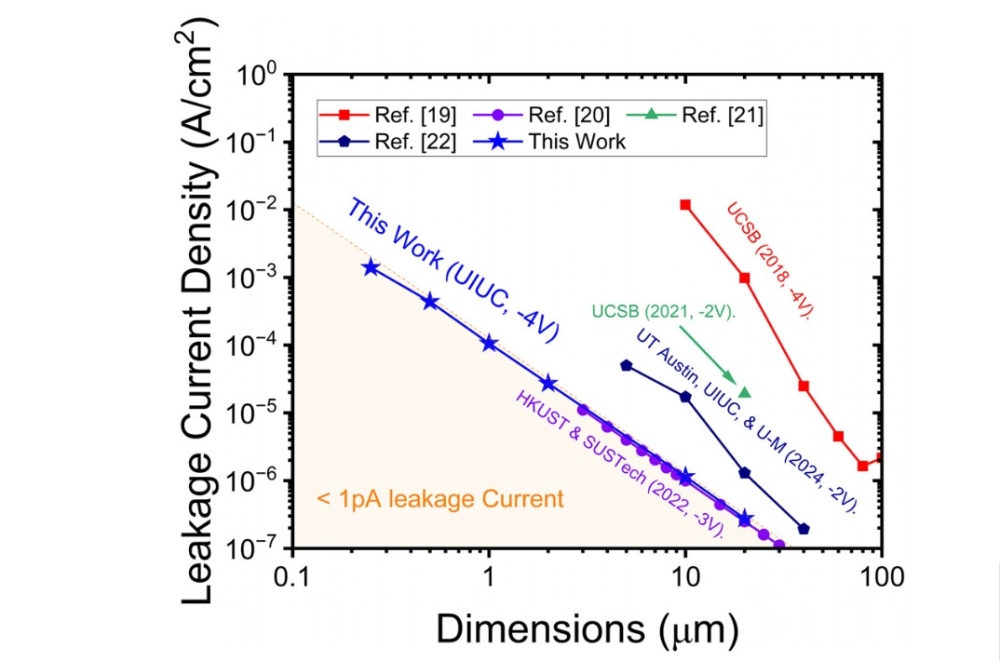
Researchers at the University of Illinois Urbana-Champaign (UIUC) have successfully fabricated InGaN blue LEDs down to 250nm in size, a critical step for next- generation high-resolution displays and optical comms. However, their study, published in Applied Physics Letters, reveals a new challenge: a sharp 'efficiency cliff' when these LEDs are scaled to submicron dimensions.
The team, led by Can Bayram, professor at the department of Electrical and Computer Engineering and director of the Innovative Compound semiconductoR LABoratory (ICORLAB), employed a top-down fabrication approach using electron beam lithography on QST substrates.
The resulting submicron LEDs, some as small as 250nm by 250nm, initially demonstrated promising electrical characteristics, including ideal forward voltage and remarkably low leakage current density. This suggested that the chemical treatments and passivation techniques used were effective in recovering sidewall damage from the etching process.
Despite these positive indicators, the study found a dramatic decrease — approximately 70 percent — in peak external quantum efficiency (EQE) as the LEDs were scaled from 2μm down to 250nm. This 'efficiency cliff' is a surprising outcome, particularly as the EQE remained relatively stable for devices scaled from 20 μm down to 2 μm, according to Bayram.
"Our findings show that the conventional sidewall passivation methods, which work well for micro-LEDs, are not sufficient when we push the dimensions into the submicron realm," he explained. "The issue appears to be that as the LED mesa size becomes comparable to the distance carriers can diffuse laterally, the impact of the sidewalls and any associated non-radiative recombination becomes overwhelmingly dominant, even with current state-of-the-art passivation."
The research indicates that at these ultrasmall scales, the proportion of the LED's active region affected by sidewall defects significantly increases. While the team achieved good recovery of sidewall damage, evidenced by low leakage currents, the standard passivation (an atomic layer deposited bilayer of aluminum oxide and silicon dioxide) could not sufficiently suppress surface recombination in these submicron devices.
This study underscores a critical hurdle for the practical implementation of top-down fabricated submicron LEDs, says Bayram. While the successful fabrication of 250nm LEDs with good electricals is a promising starting point, overcoming the 'efficiency cliff' is paramount. "These results call for a fundamental rethinking of how we manage sidewall effects in these tiny light emitters," Bayram added. "Novel passivation strategies, potentially involving new materials or techniques to prevent lateral carrier diffusion, will be essential to unlock the full potential of submicron LEDs for future technologies."
Pictured above: Leakage current density compared with the literature. The device leakage current is low, ~1pA at -5V. This low, sidewall-limited leakage current is attributed to good passivation quality and negligible bulk leakage current.



